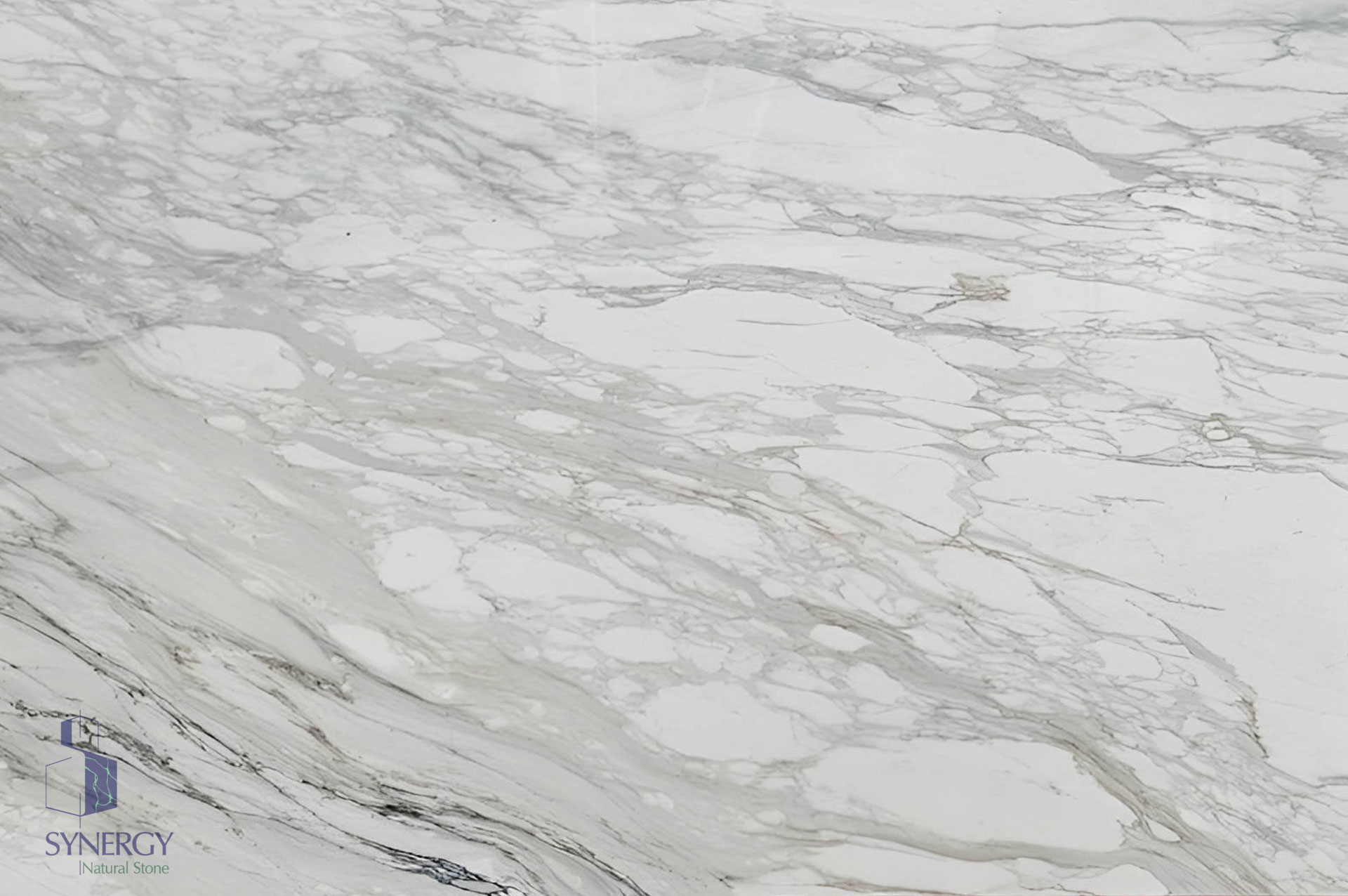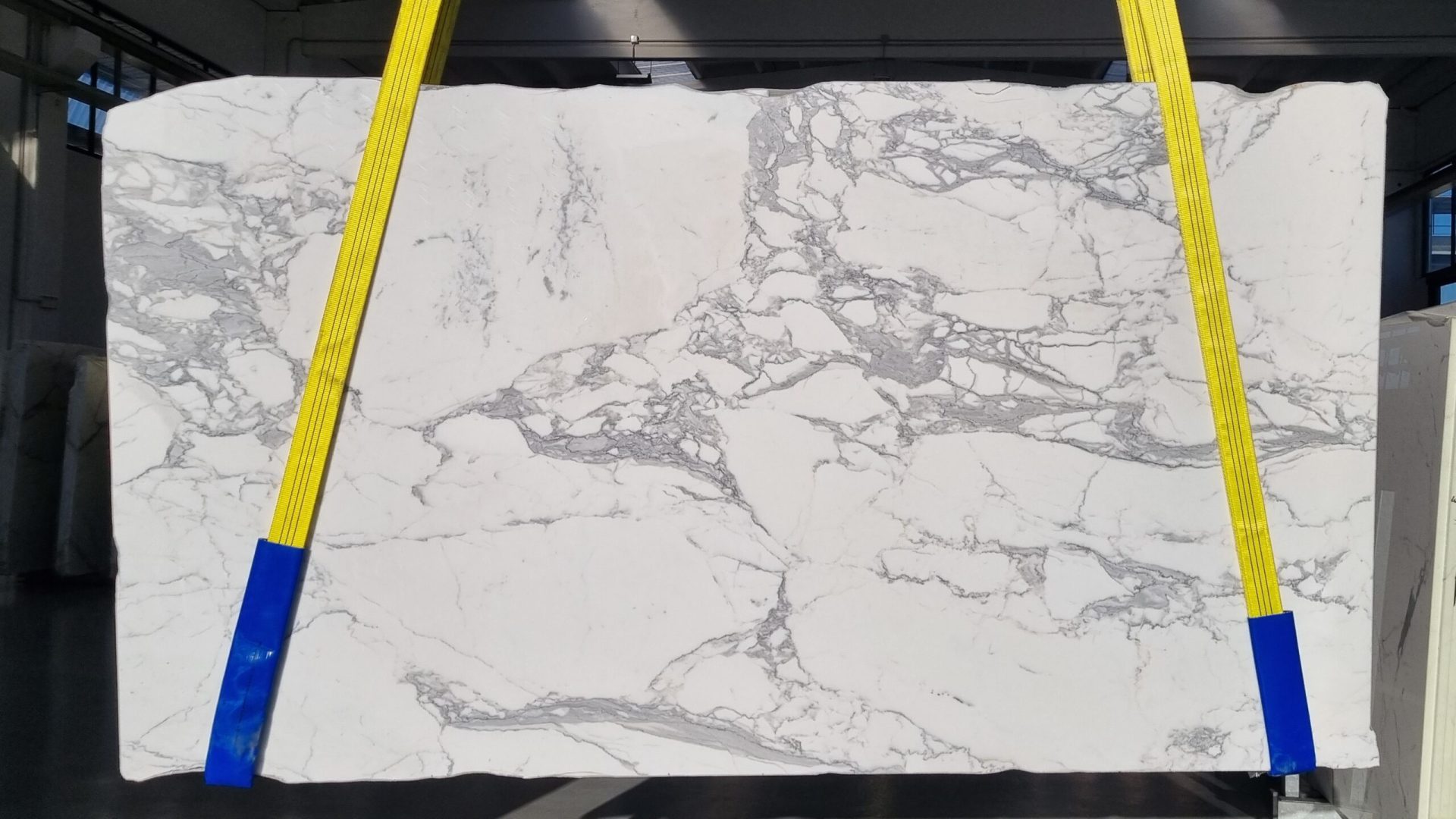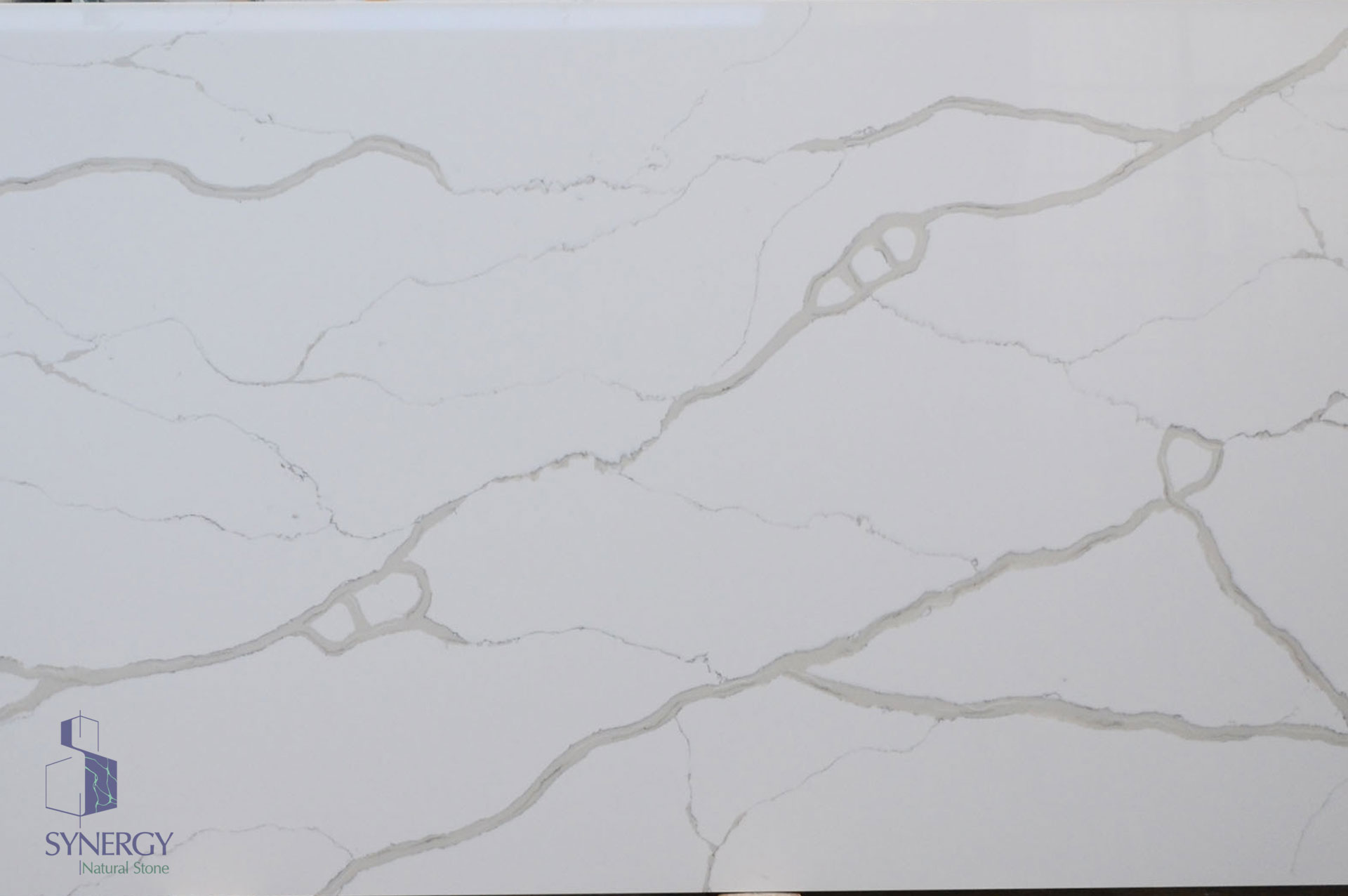Calacatta Marble



Calacatta stone refers to a variety of high-quality white marble prized for its elegant veining and luxurious appearance. Here’s a breakdown of its key characteristics:
- Color: Calacatta marble features a white or ivory background with contrasting veining, typically in grey, gold, or brown tones. The veining patterns can vary greatly, adding to the unique character of each slab.
- Origin: While the name “Calacatta” doesn’t denote a specific origin, Carrara, Italy is a renowned source of high-quality Calacatta marble. Calacatta marble can also be found in other parts of the world, but these varieties might have slightly different characteristics.
- Properties: Marble is a softer stone compared to granite. Calacatta stone, like most marble, requires sealing to protect against scratches, etching, and stains.
- Light Translucency: Calacatta marble can be translucent to some extent, allowing some light to pass through. This property can be particularly striking when backlit, highlighting the stone’s depth and veining.
Applications: Due to its beauty and elegance, Calacatta marble is a popular choice for high-end residential and commercial projects. Here are some common uses:
- Countertops: Creates a stunning focal point in kitchens and bathrooms, adding a touch of timeless luxury.
- Flooring: Less common due to the potential for scratches, but can be used in low-traffic areas for a luxurious feel.
- Wall Cladding: Provides a sophisticated and classic touch in living rooms, hallways, or bathrooms.
- Backsplashes: Creates a beautiful focal point and complements natural lighting, especially when backlit.
- Fireplace surrounds: Creates a grand and elegant focal point.
- Statues and sculptures: Calacatta marble varieties with minimal veining were historically favored for sculptures and architectural elements.
Variations of Calacatta Stone:
There are several subcategories of Calacatta stone, differentiated by their specific veining patterns and origins. Here are some popular types:
- Calacatta Borghini: A classic Calacatta variety with a white background and dramatic grey veining.
- Calacatta Gold: Features a white or ivory base with gold or yellow veining, adding a touch of warmth.
- Calacatta Extra: Known for its clean white background with minimal veining, showcasing the purity of the white marble.
- Calacatta Michelangelo: Named after the famous sculptor Michelangelo, this variety features a white background with dramatic grey and sometimes brown veining.
Things to Consider About Calacatta Stone:
- Variations: As a natural stone, each slab of Calacatta marble will have unique variations in color and veining patterns.
- Cost: Calacatta marble, particularly those from Carrara, Italy, can be on the pricier side compared to other marble varieties.
- Versatility: Calacatta marble can complement various design styles, from classic and traditional to modern and contemporary. The overall feel will depend on the specific veining patterns, other design elements, and how the stone is used within the space.
- Maintenance: Regular sealing is recommended to maintain its beauty and protect it from stains. Due to its softer nature, avoid using harsh chemicals or abrasive cleaners.
